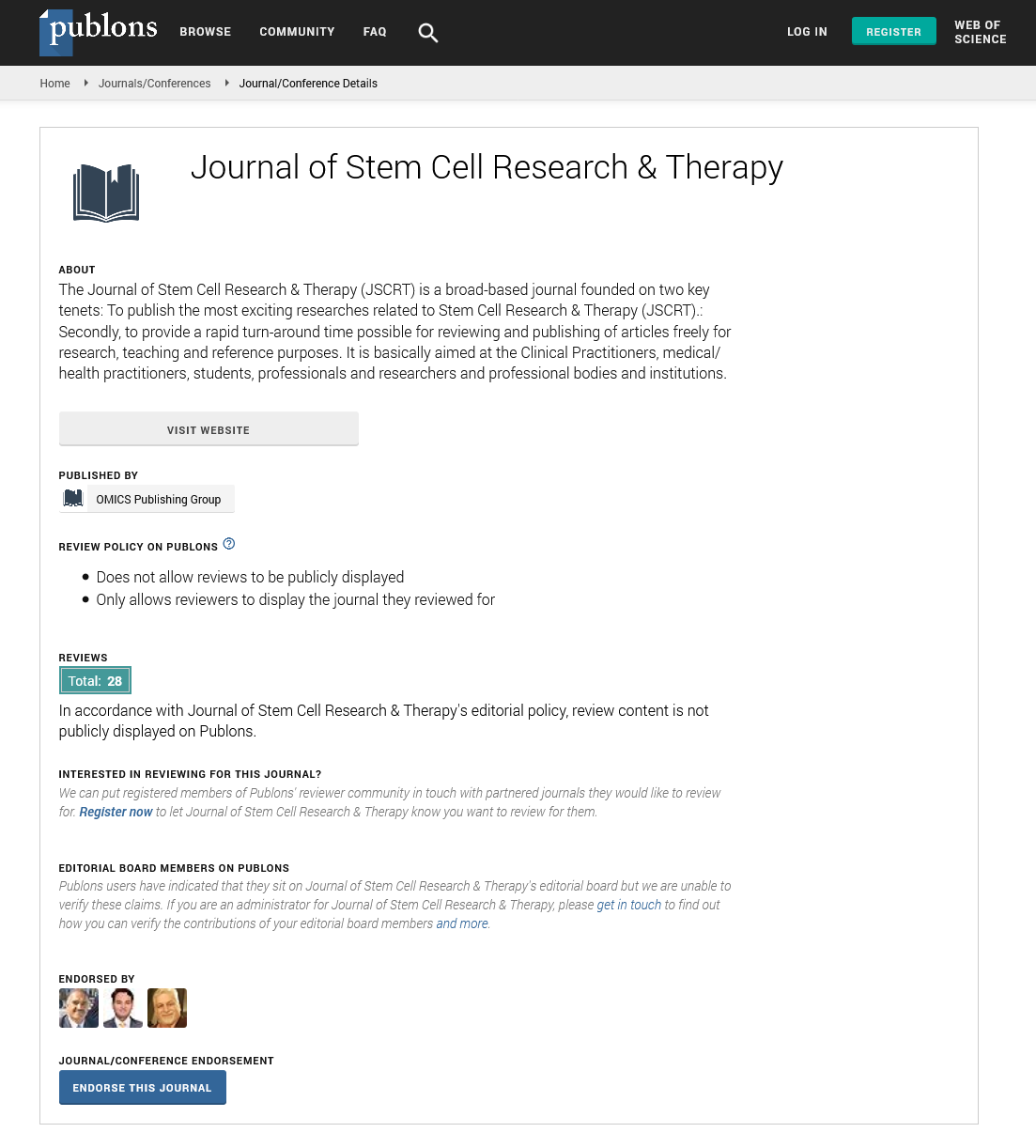Indexed In
- Open J Gate
- Genamics JournalSeek
- Academic Keys
- JournalTOCs
- China National Knowledge Infrastructure (CNKI)
- Ulrich's Periodicals Directory
- RefSeek
- Hamdard University
- EBSCO A-Z
- Directory of Abstract Indexing for Journals
- OCLC- WorldCat
- Publons
- Geneva Foundation for Medical Education and Research
- Euro Pub
- Google Scholar
Useful Links
Share This Page
Journal Flyer

Open Access Journals
- Agri and Aquaculture
- Biochemistry
- Bioinformatics & Systems Biology
- Business & Management
- Chemistry
- Clinical Sciences
- Engineering
- Food & Nutrition
- General Science
- Genetics & Molecular Biology
- Immunology & Microbiology
- Medical Sciences
- Neuroscience & Psychology
- Nursing & Health Care
- Pharmaceutical Sciences
Abstract
Characterization of Carbohydrate Surface Markers on Mouse Embryonic Stem Cells
Zhenwei He, Yue An, Gang Shi, Yingwei Lin, Jiliang Hu and Yali Li
Glycosylation of proteins and lipids on cell surface have been shown to be important in maintaining pluripotency and stem cell fate in embryonic stem cells. Lectins have been widely used to characterize carbohydrate modifications on cell surface of embryonic stem cells to determine pluripotency and stem cell fate. In the present study, a panel of 14 lectins and carbohydrate antibodies was used to characterize the carbohydrate surface markers of mouse Embryonic Stem (ES) Cells. SSEA-1-positive mouse ES cells were firstly enriched and the carbohydrate profile of the cells was determined by flow cytometry and immunocytochemistry. Enrichment of mouse ES cells yielded approximately 99.95 ± 0.87% of SSEA-1-positive mouse ES cells. A uniform and high percentage of binding was observed for PNA, DSL, JAC, GNL, PSA and LTL, with PNA, DSL, JAC and GNL having similar percentage of binding to SSEA-1 (99.9%), while PSA and LTL binding were approximately 95%-99%. Partial binding of WFL, SNA and AAL were observed in mouse ES cells which was also reflected by the respective immunocytochemistry images. A very low percentage of binding was observed for MAA and UEAI. The data showed that high expression of mannose, N-acetyllactosamine and galactose are present on the cell surface of mouse ES cells. Some reliable surface markers that can be used to determine pluripotency are PNA, DSL, JAC and GNL, which showed similar binding to SSEA-1, a well-established pluripotent marker. Taken together, the data has provided information on the cell surface carbohydrate profile of mouse ES cells.

